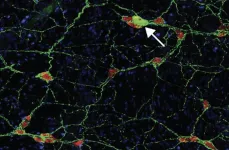New Haven, Conn. — High levels of exposure to the virus that causes COVID-19 may reduce or overcome the protection that vaccination and prior infection provides, according to a new study by researchers from Yale University, the University of Florida, and the Connecticut Department of Correction.
The findings, published Aug. 19 in Nature Communications, suggest that in densely crowded settings, control measures that reduce levels of exposure to the virus — such as masking, improved ventilation, and distancing — may afford additional benefit in preventing new infections among people who have been vaccinated or previously infected.
The study was performed within the Connecticut Department of Correction system to understand whether the immunity gained after vaccination or a prior infection was less effective or “leaky” in situations where people are exposed to high levels of the virus, said Margaret Lind, lead author of the paper and an associate research scientist at Yale School of Public Health.
Answering this question during the pandemic has been a major challenge because “it’s really hard to find a population, such as the residents of the Connecticut Department of Correction, where we know the type of exposure somebody has and we know their vaccination and prior infection status,” Lind said.
Dr. Byron Kennedy, chief medical officer for the Connecticut Department of Correction and associate clinical professor at the Yale School of Public Health, added, “We had a unique opportunity to answer this question because the Department of Correction had mounted an intensive COVID-19 testing program and we were identifying and isolating infected individuals.”
The researchers tracked infections among 15,444 residents of Connecticut correctional facilities between June 2021 and May 2022, when the state experienced two epidemic waves due to the emergence of the COVID-19 Delta and Omicron variants. They also determined which people had resided with a COVID-19-positive cellmate and, as a result, had high exposure to the COVID-19 virus.
The study found that during the Delta and Omicron epidemic waves, immunity acquired after a vaccination, prior infection, and both vaccination and infection (“hybrid immunity”) was weaker when residents were residing with an infected inmate.
Specifically, during the Delta wave, vaccination was 68% effective at preventing infection in residents without a documented exposure but was just 26% effective in residents with exposure to an infected cellmate. A previous infection was 79% effective in preventing infection in residents without a documented exposure but was 41% effective when a resident was exposed to an infected person in their cell. Hybrid immunity provided the highest level of protection, at 95% and 71% effectiveness, in residents without a documented exposure and with a cell exposure, respectively.
While the overall protection afforded by vaccination, prior infection, and hybrid immunity was lower during the epidemic wave with the more-transmissible Omicron variant, the same pattern in the levels of protection was observed. Vaccination was 43% effective at preventing infection in residents without documented exposure but was just 4% in residents who shared a cell with an infected person. A previous infection was 64% effective without a documented exposure but was only 11% effective when a resident was exposed to an infected person in their cell. Although hybrid immunity afforded higher levels of protection during the Omicron wave, it was only 20% effective in residents with an exposure in their cell as compared to being 76% effective in residents without documented exposure.
The study's findings underscore the importance of the state of Connecticut’s efforts to protect its incarcerated population during the pandemic. During the two epidemic waves, residents had a 5 to 10 times increased risk of being infected when they shared a cell with an infected individual and a two to four times increased risk of being infected if there was an infected individual in the same cell block. The majority of infections were detected by the Department of Correction’s contact tracing program, which rapidly identified and tested contacts of infected individuals in cells and cell blocks. “The success of contact tracing was a critical element in keeping our population safe in this high-risk congregate setting during the pandemic,” said Kennedy.
“This research is the first study, as far as we are aware, that provides real-world evidence for the exposure-dependent or ‘leaky’ nature of the immunity afforded by vaccination and infection,” Lind said.
Biology Professor Derek Cummings, a co-senior author of the paper and associate director of the Emerging Pathogens Institute at the University of Florida, added: “More studies are needed to understand whether the same phenomenon of leaky protection may be occurring among vaccinated and previously infected people in the other congregate settings, such as hospitals and nursing homes, and in the community during mass gatherings.”
“We suspect that leaky protection may be the norm for immunity to many infectious diseases of public health importance,” said Dr. Albert Ko, the Raj and Indra Nooyi Professor of Public Health at the Yale School of Public Health and co-senior author of the paper. “This study is a good example of leveraging collaboration between state government and a university to answer a difficult yet fundamental question on how immunity to COVID-19 works, in addition to guiding how we protect our vulnerable populations,” added Ko, who was also co-chair of Governor Ned Lamont’s Reopen Connecticut Advisory Group during the height of the COVID-19 epidemic.
Other co-authors of the paper are Murilo Dorion, Sarah Lapidus, Russel Thomas, Inci Yildirim, and Saad Omer from the Yale School of Public Health; Robert Richeson, Amy Houde, and Mary Lansing from the Connecticut Department of Correction; Wade Schulz from the Yale School of Medicine; Jason Andrews from Stanford University, and Matt Hitchings from the University of Florida, Gainesville.
END






